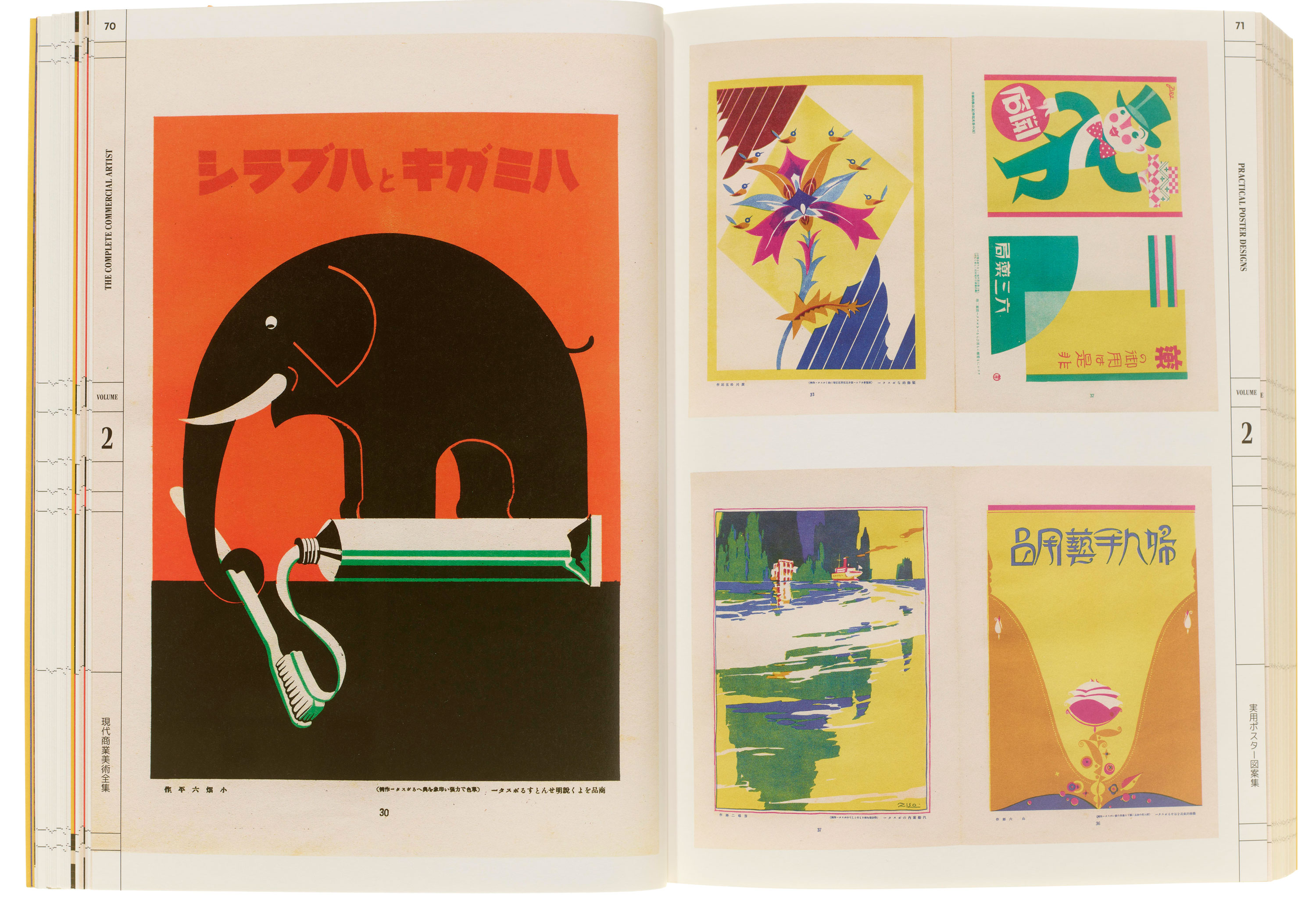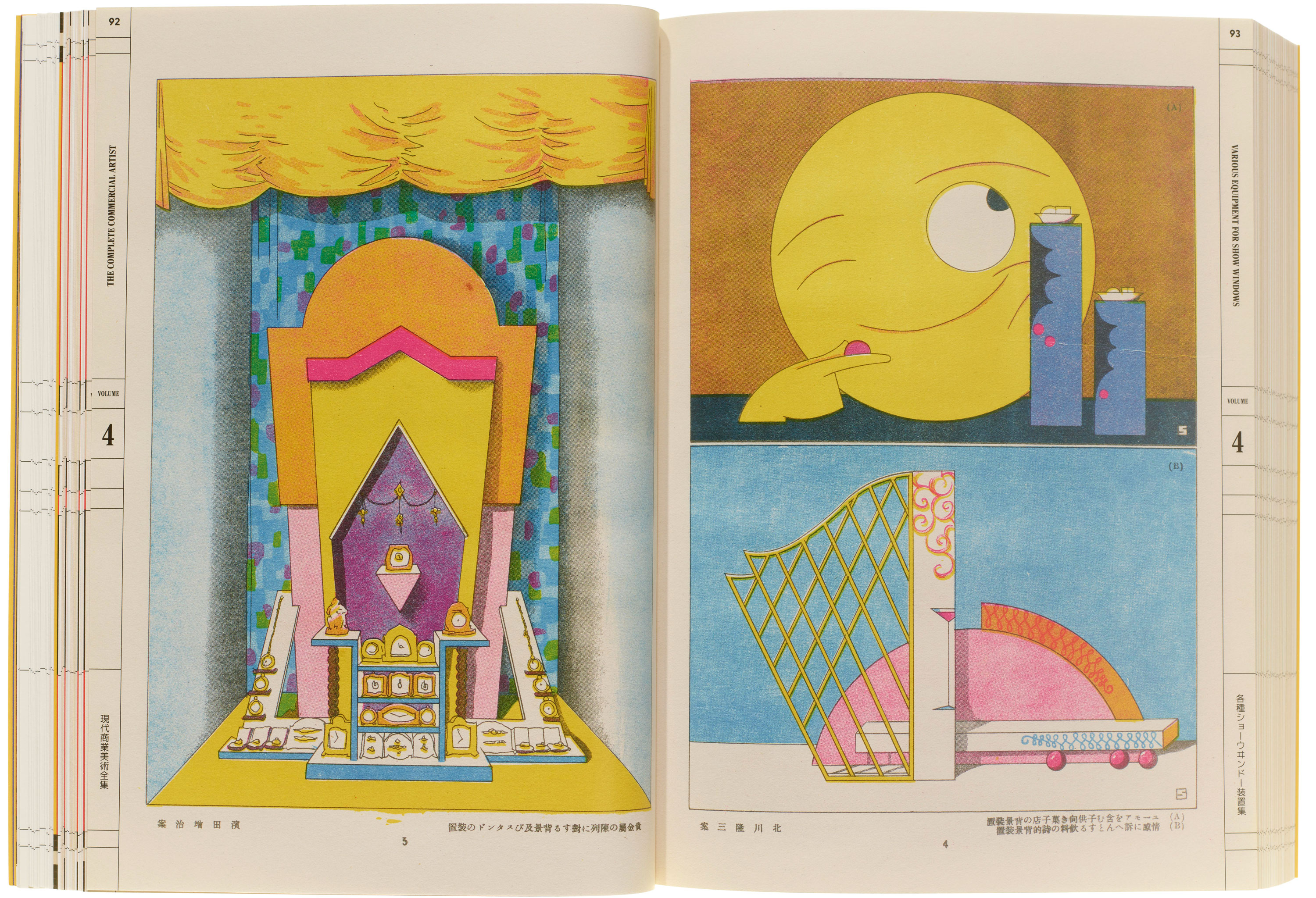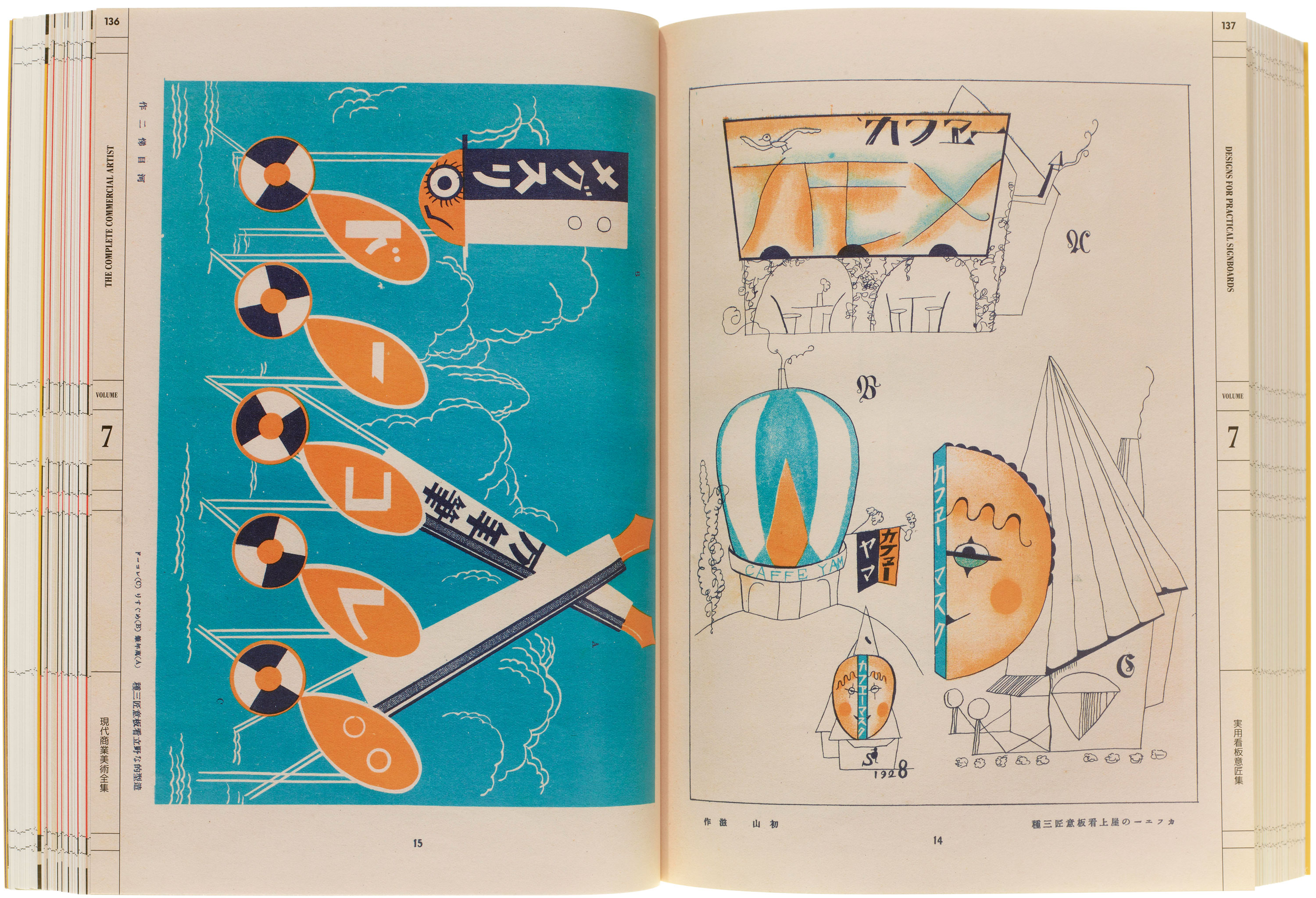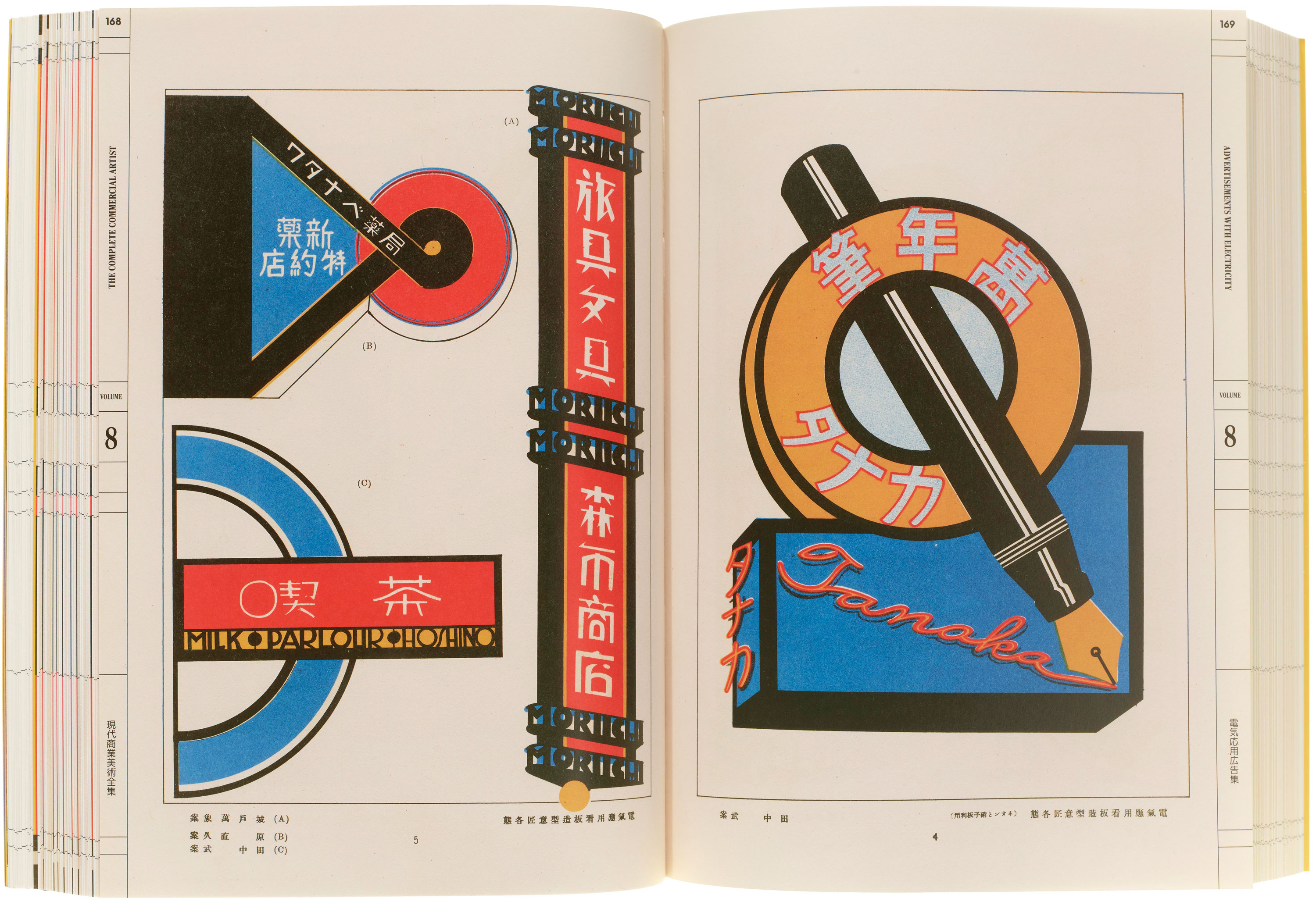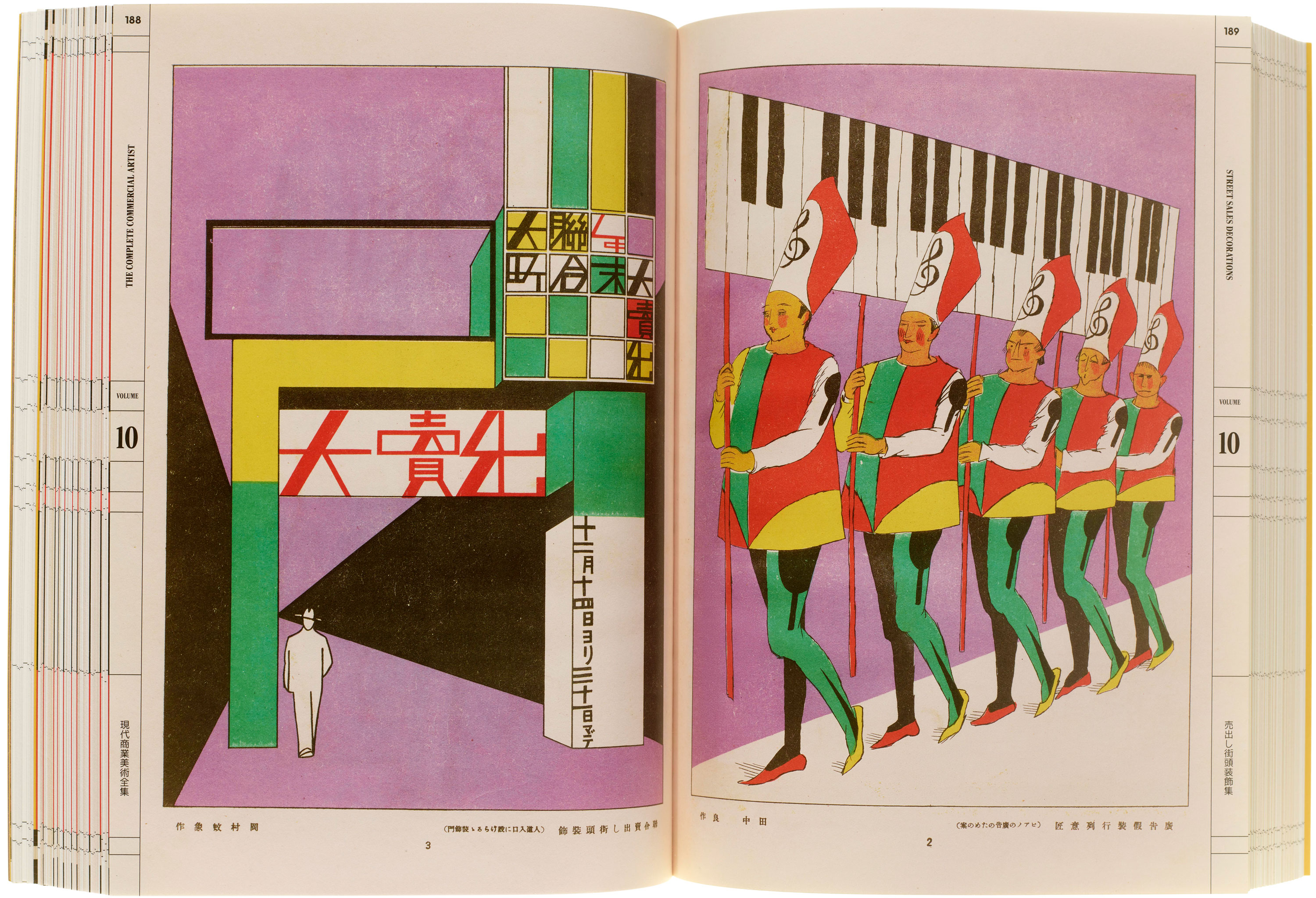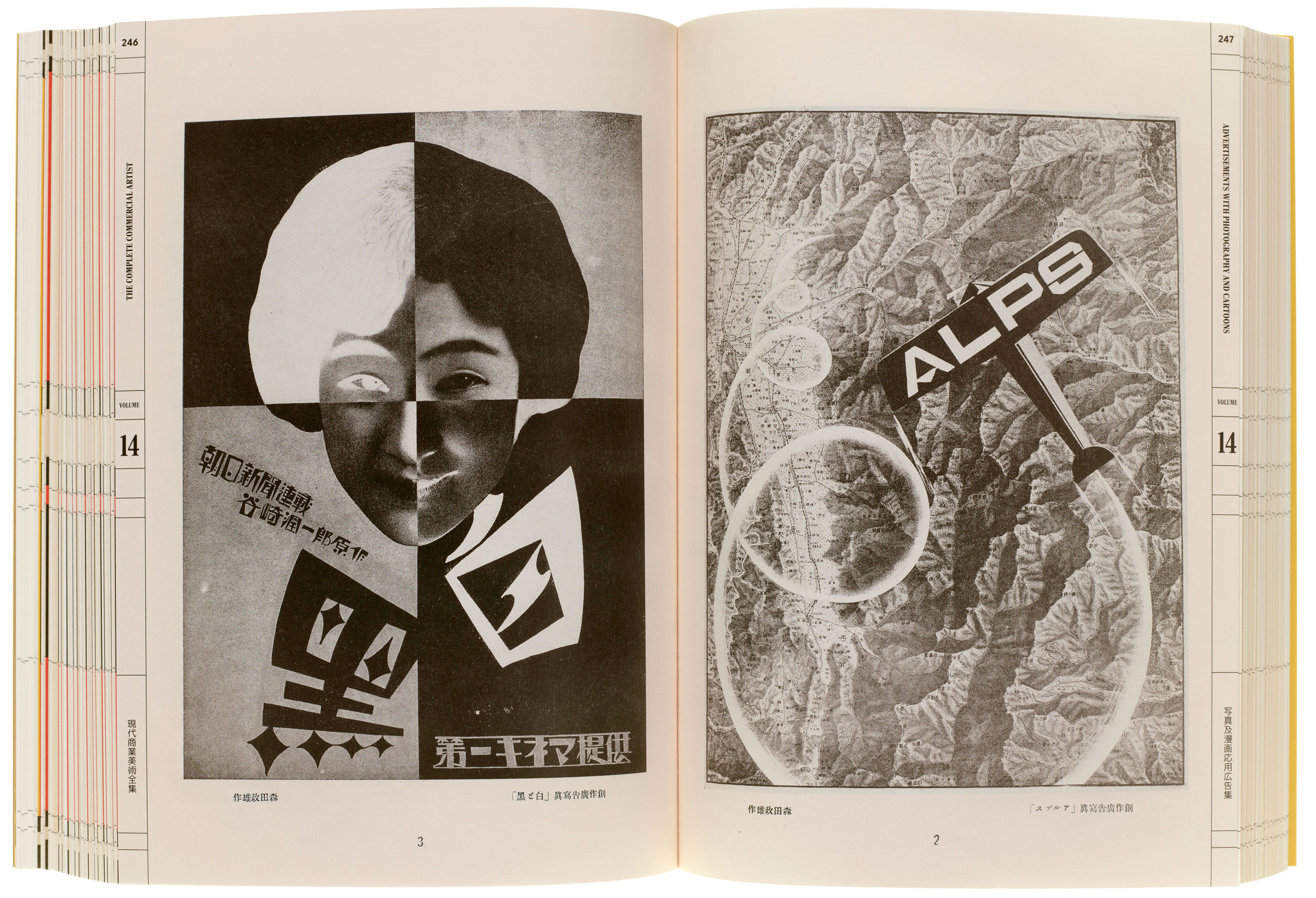News
Inside The Complete Commercial Artist: Making Modern Design in Japan, 1928–1930
In the latest from Letterform Archive Books, author Gennifer Weisenfeld shares a defining wonder of global design history

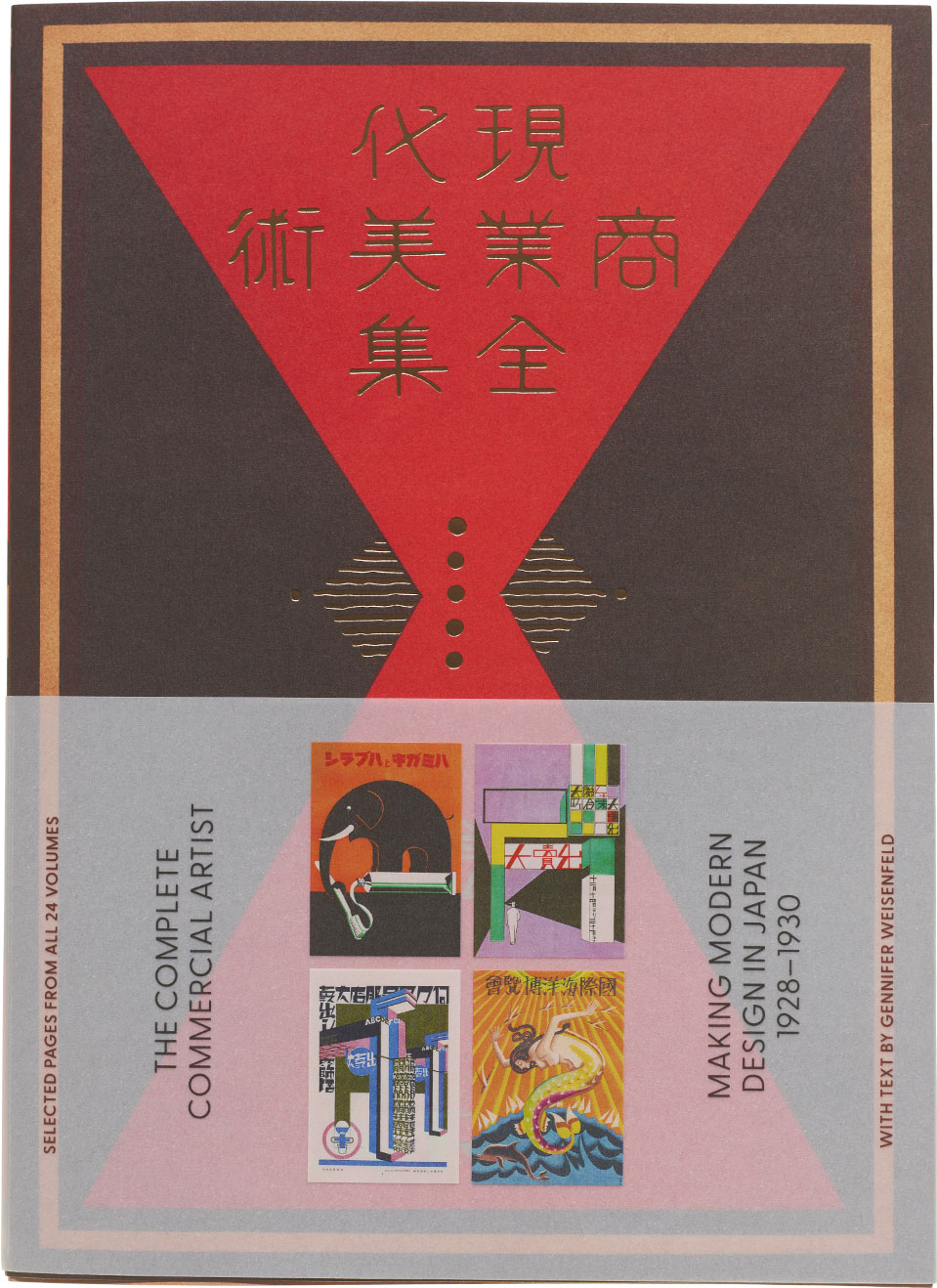
If design has always existed, design as we know it had to be invented, and it didn’t happen all at once or in just one place.
There’s the somewhat familiar story of how in the US and Europe, nineteenth-century commercial and technological changes were met by the likes of self-styled “typographic designer” Oscar H. Harpel (1828–81), and later by the aesthetic innovations art nouveau artists, the Bauhaus, and design pioneers such as W. A. Dwiggins, who helped make “graphic design” a popular notion. Japanese visual culture—especially woodcut prints, stencils, and calligraphy—significantly informed these developments, modeling graphic alternatives to longstanding artist and craft idioms.
Then there’s the story of Japan’s own paths to modern design—or to commercial art (shōgyō bijutsu 商業美術) as it came to be called in the 1920s and ’30s. Equally fascinating yet not widely known, it comes to life in the era’s most important design compendium, The Complete Commercial Artist (Gendai shōgyō bijutsu zenshū 現代商業美術全集). “At once encyclopedic and carrying a manifesto-like charge,” writes art historian Gennifer Weisenfeld in her new book, The Complete Commercial Artist: Making Modern Design in Japan, 1928–1930, this multi-volume compendium was “an important record of original design work by named artists from the period and an invaluable trade publication for disseminating the most up-to-date design practices.” In this post, we take a look inside this remarkable document and the book we’ve made to share it.
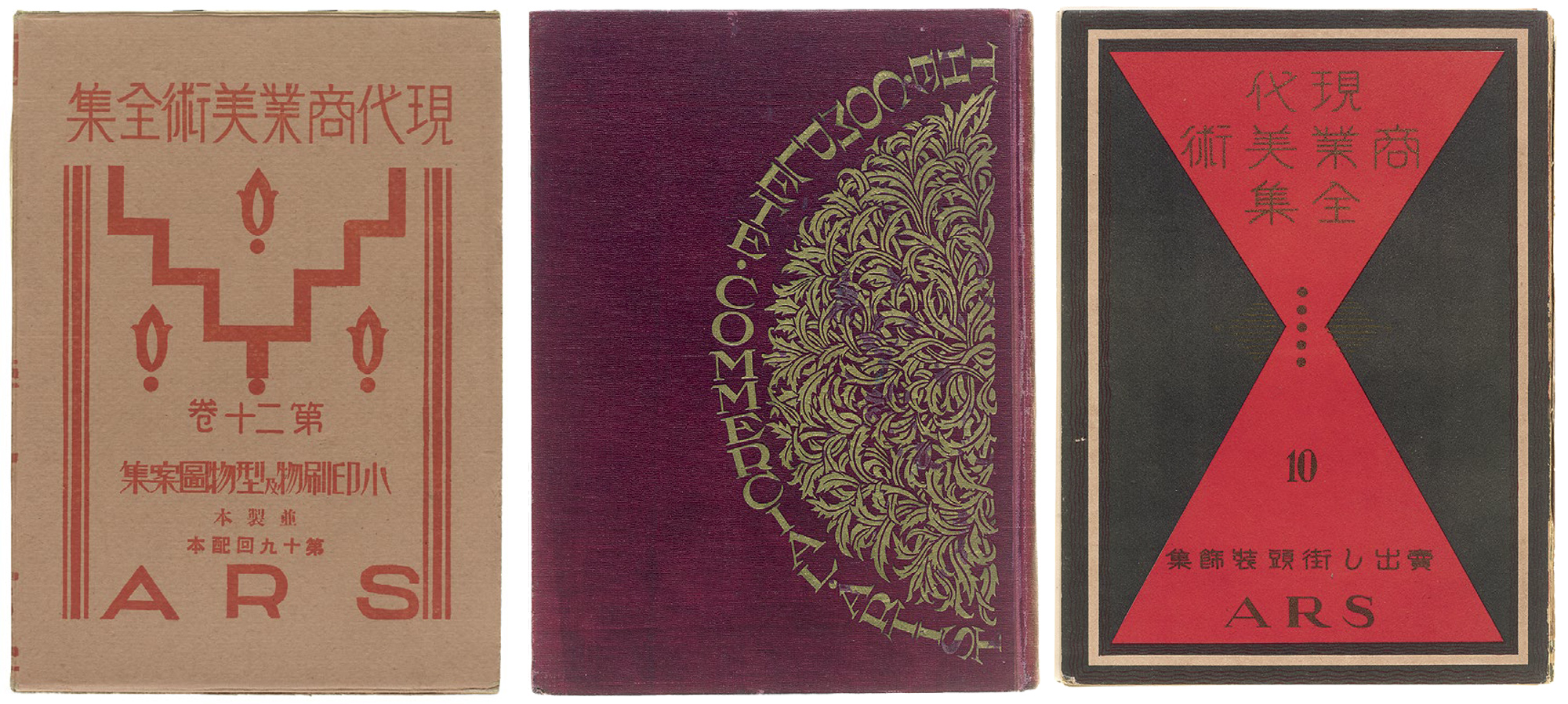
A Completely Modern Vision
“Complete” may seem a bold word for publication about a profession and identity still in the making. Yet as Weisenfeld shows, nothing could better capture its editors’ great ambitions. Weighing in at 24 volumes, with original contributions from more than 170 Japanese designers plus hundreds of reproductions gathered from European design publications of the day, The Complete Commercial Artist provided an up-to-the-minute synthesis of global design culture with Japan as a major node of invention. Taken together, its volumes—each devoted to a distinct subtopic, from 3D signboards and show windows to advertising manga and product labels—address the entire field of commercial design as it was taking shape in the 1920s.
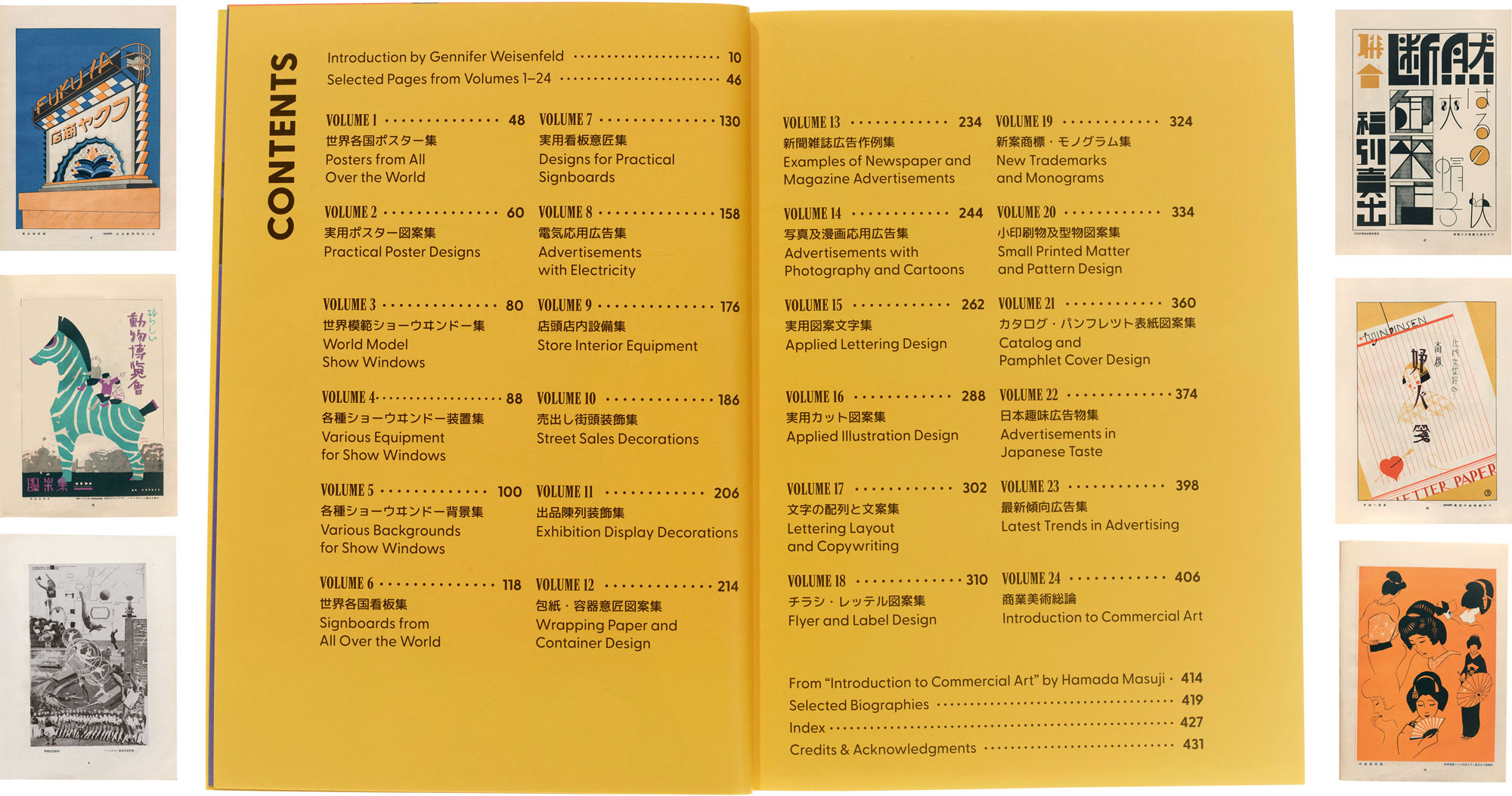
More than a practical guide or inspirational scrapbook, The Complete Commercial Artist was a project of collective self-fashioning undertaken in close conversation both with new trends from abroad and established domestic traditions. Thus its editors, all leaders in a growing design scene, arrange French Art Deco posters, Bauhaus lettering experiments, and American cartoons alongside Edo-era prints and calligraphic seals, carefully selected and recontextualized as sources for contemporary design. Thus, too, avant-garde exercises in abstraction and playful mass culture creations lend color and form to the latest products, fashions, and character types of Japanese urban life.
All images in the gallery below are hi-fi captures from The Complete Commercial Artist: Making Modern Design in Japan, 1928–1930. Click an image to enter fullscreen view, then click or pinch to enlarge.
The results present the commercial artist as a herald of the new age. Versed in the most recent theories and techniques, connected by new professional organizations and institutes of training, and absolutely indispensable to modern business, he (almost all of the contributors are men) cuts a distinct profile. Behind this group image, however, singular stories and individual expression abound. Design legends such as Sugiura Hisui 杉浦非水 share space with avant-gardist Murayama Tomoyoshi 村山知義, multidisciplinary artist-designers Takehisa Yumeji 竹久夢二 and Saitō Kazō 齋藤佳三, pioneering illustrators Maekawa Senpan 前川千帆 and Takei Takeo 武井武雄, leading architects Ishimoto Kikuji 石本喜久治, Karata Chikatada 蔵田周忠, and Yamaguchi Bunzō 山口文象, and many others.

With such diverse voices, one doesn’t expect a definitive statement on the greater significance of the movement. So it’s all the more striking to read lead editor Hamada Masuji 濱田増治’s attempt. As Weisenfeld details, it was Hamada who first introduced commercial art (shōgyō bijutsu) into the Japanese lexicon in 1926. Four years later, in a volume-length theoretical essay that brings The Complete Commercial Artist to a close, he lays forth a utopian vision of the creative energies now rallying around this term. "Commercial art constitutes a new and definitive art,” he writes, one that breaks with the limits and pretensions of past art without ever losing itself in narrow commercial ends. By imparting useful and elevating forms to objects of everyday life, Hamada argues, it in fact lays the cultural groundwork for a society liberated from the domineering influences of power and class:
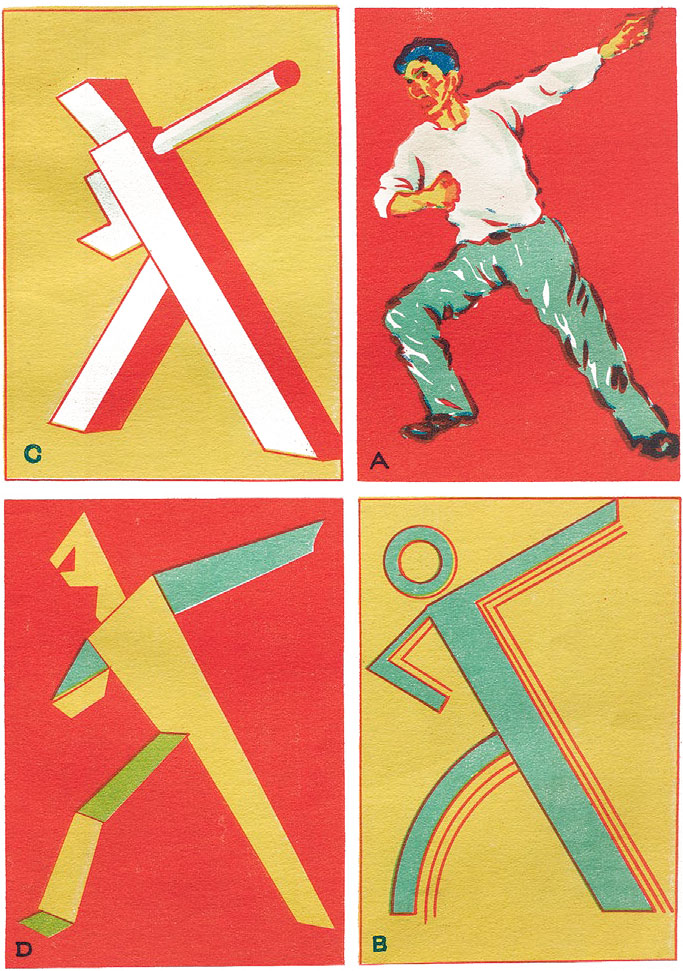
Display windows are beautiful, cars are beautiful, plates and containers are beautiful; they are endowed with a beauty resplendent to people (which is nevertheless also productive).... When beauty is distributed in commercial form, it is distributed to the largest number of people…. Nobody can affect this process, no matter what their class or authority.... Indeed, art today has removed itself from the irrationality of the ruling classes and become an art of the people and of artists for the very first time.
Hamada Masuji 濱田増治, from “Introduction to Commercial Art,” translated in The Complete Commercial Artist: Making Modern Design in Japan, 1928–1930, pages 414–15.
However high-flown Hamada’s hopes for design as a force of universal accessibility seem, they allow us to appreciate the exuberant scope and serious ambition of The Complete Commercial Artist. This was art to be shared, in all its variety and as widely as possible.
Today, only a small number of research libraries and private collections hold full copies of the periodical. Weisenfeld’s book makes its contents widely available to English-language audiences for the first time, sharing not only its astonishing visuals but also the personalities and ideas behind its making.
About the Book
With hundreds of selections from all twenty-four volumes, The Complete Commercial Artist: Making Modern Design in Japan, 1928–1930 offers a comprehensive survey of the compendium. High-fidelity reproductions preserve every detail, from the colorful brilliance of its lithographs to the varied impressions of hurriedly set type. Like the original, the book plunges into a printed world of sample posters, labels, magazine covers, illuminated signs, print advertisements, and much more.
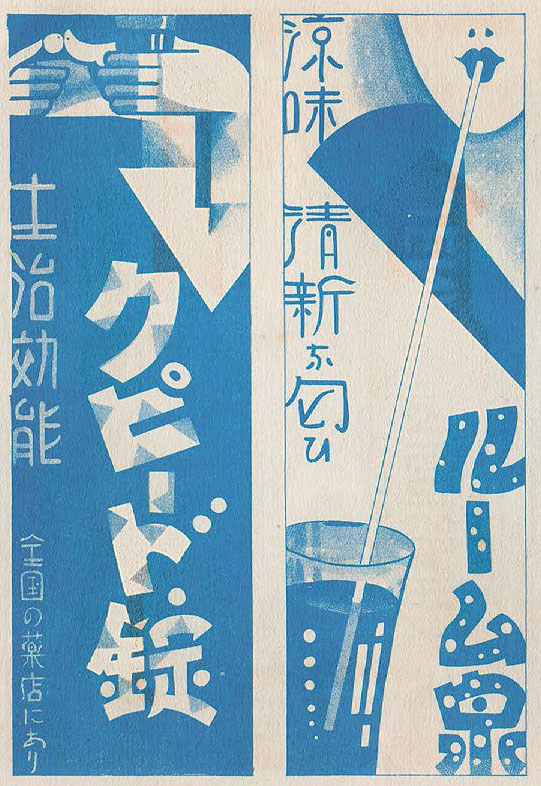
To help navigate this splendor, Weisenfeld, Professor of Art and Art History at Duke University and author of Mavo: Japanese Artists and the Avant-Garde, 1905–1931, Gas Mask Nation: Visualizing Civil Air Defense in Wartime Japan, and the forthcoming The Fine Art of Persuasion: Corporate Advertising Design, Nation, and Empire in Modern Japan, offers a engaging account of its contexts and creation.
Weisenfeld’s introductory essay expertly traces the historical contours of commercial art in Japan, bringing its central figures into focus, exploring design’s international channels of circulation in the 1920s, and highlighting the key influences and debates of the era. She also takes an in-depth study of typography and lettering from the period, showing how in the hands of intrepid artist-designers such as Yajima Shūichi 矢島週一 (a.k.a. 矢島周一), the Japanese writing system became material for dramatically stylized, modular, expressive characters.
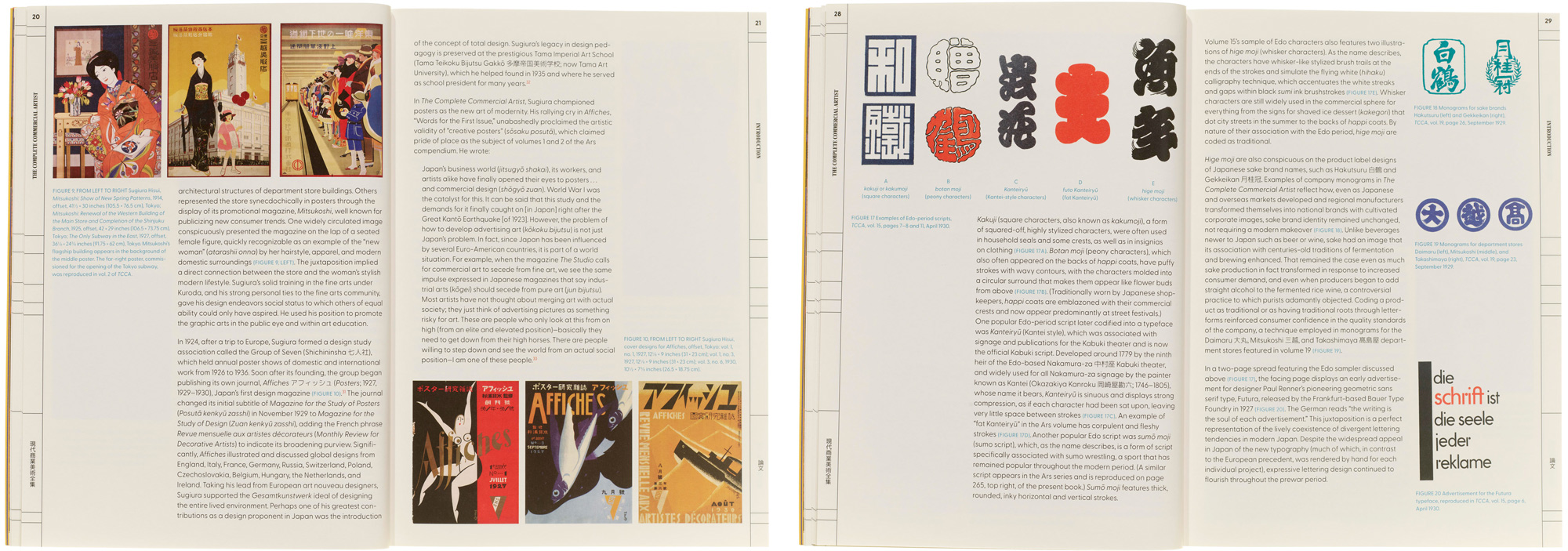
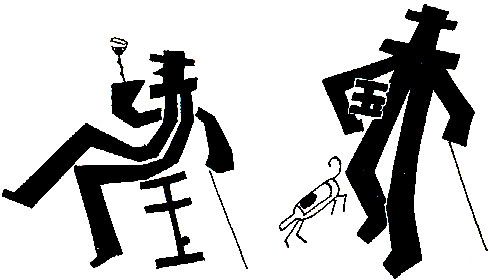
In twenty-four separate volume introductions, Weisenfeld walks readers through the compendium’s pages, sharing valuable background about the art and revealing delightful details about its cultural contexts. Along the way, readers encounter new figures of urban modernity such as the modern boy (mobo) and modern girl (moga); a plethora of traditional forms, including family crests (kamon), vertical banners (nobori), and signboards (kanban); famous companies such as Calpis soft drinks, Mitsukoshi department store, and Morinaga confectionery; and the humorous presence of series contributors, who often crack visual jokes and slip coy references into their mock-ups.
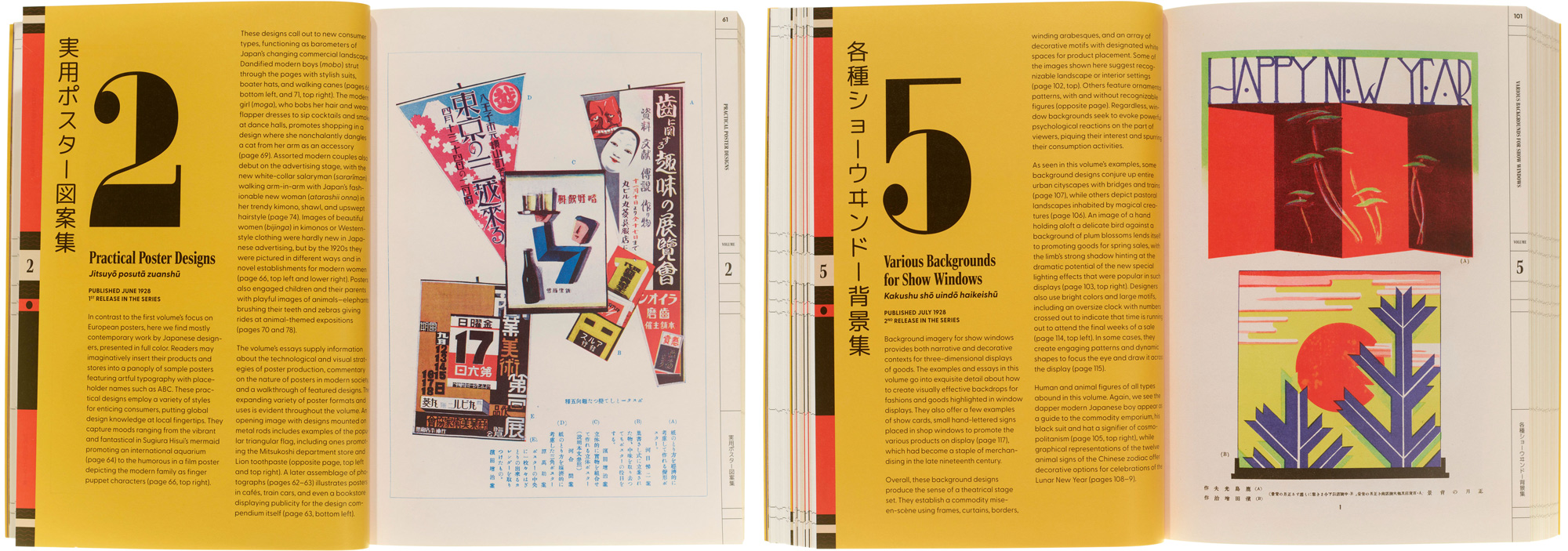
As additional context, the book includes a translated excerpt from Hamada Masuji’s utopian essay, as well as selected biographies of the best-known contributors and cross-references to their work in the compendium.
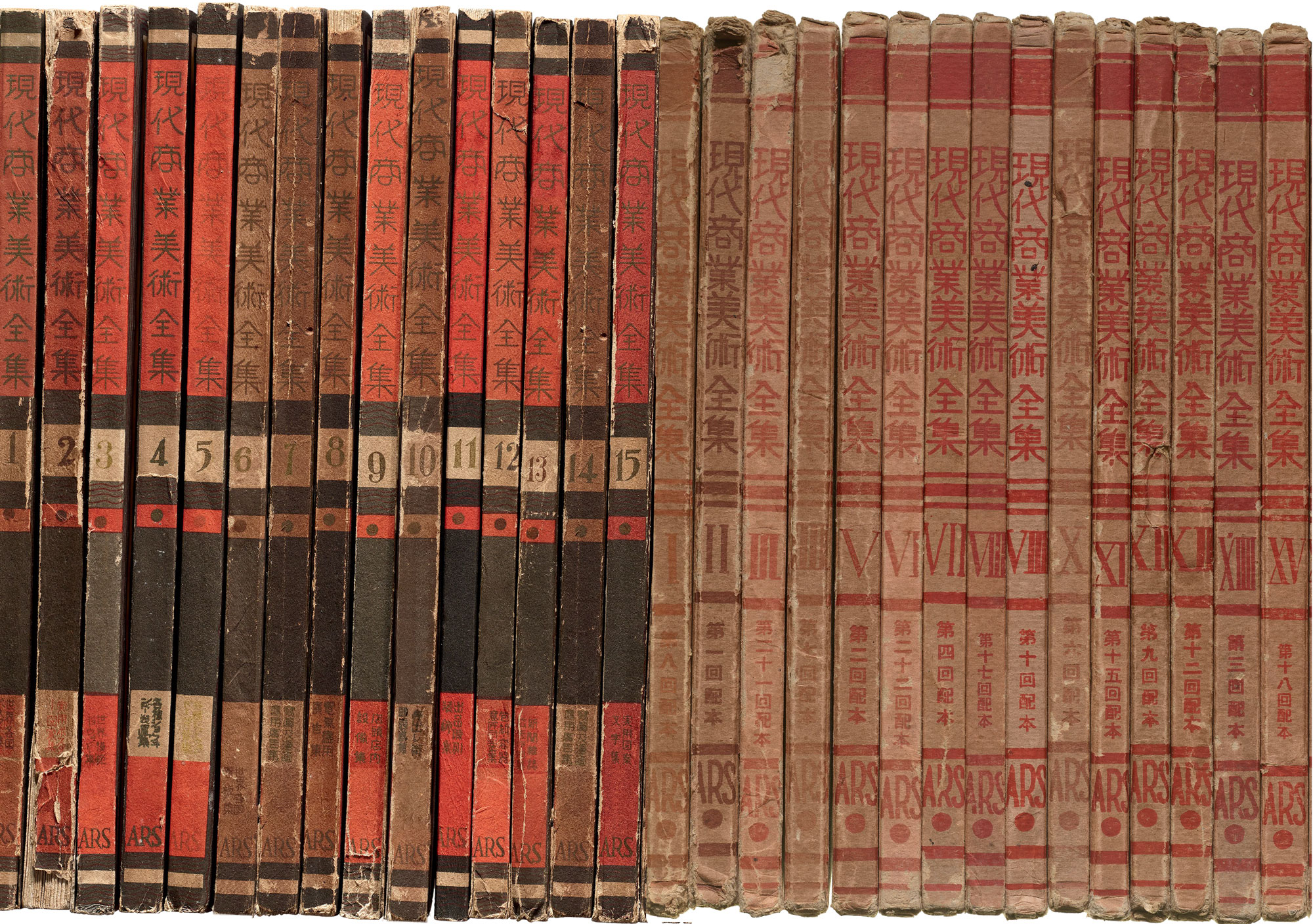
Designed by Alice Chau, Art Director for Letterform Archive Books, The Complete Commercial Artist: Making Modern Design in Japan, 1928–1930 features a foil-stamped jacket with a vellum belly band wrapped onto a paperback book sized to match the original. The interiors also draw inspiration from the series, providing an attractive present-day window into a formative moment in design history.
To add The Complete Commercial Artist to your personal library, view a full video pagethrough, and find links to Gennifer Weisenfeld’s Letterform Archive salon about the book and Florence Fu’s article on the original volumes, visit our shop at the link below. Members receive 10% off all Letterform Archive titles.
Order your copy of The Complete Commercial Artist
— Chris Westcott, Editor, Letterform Archive Books

